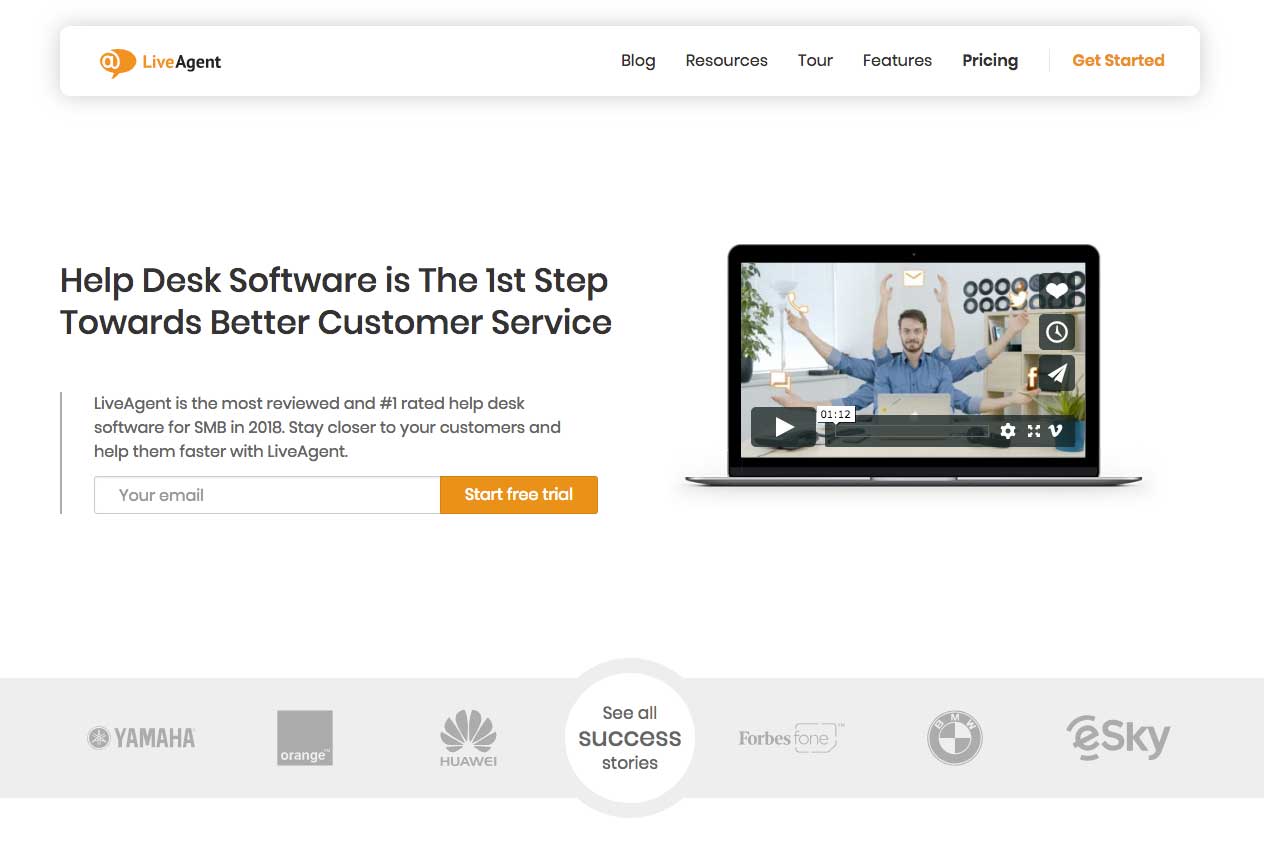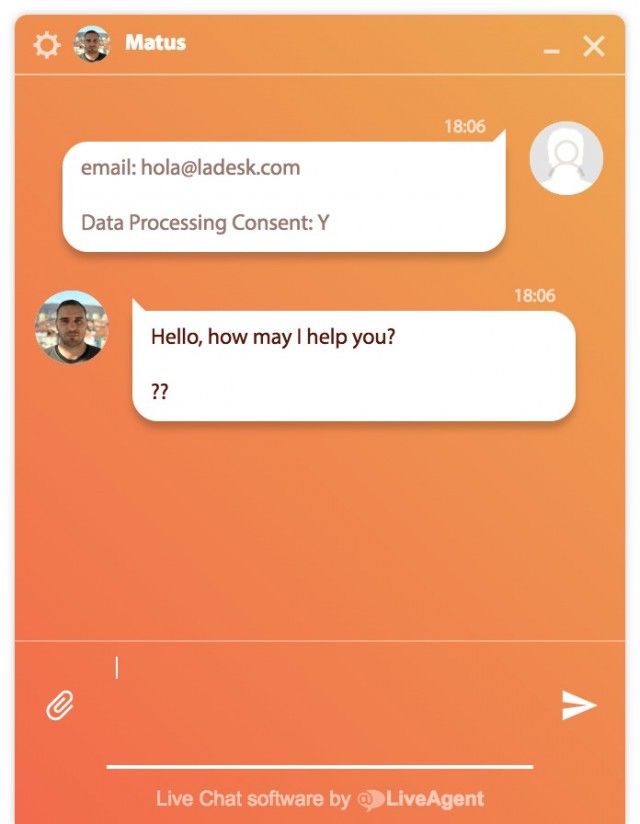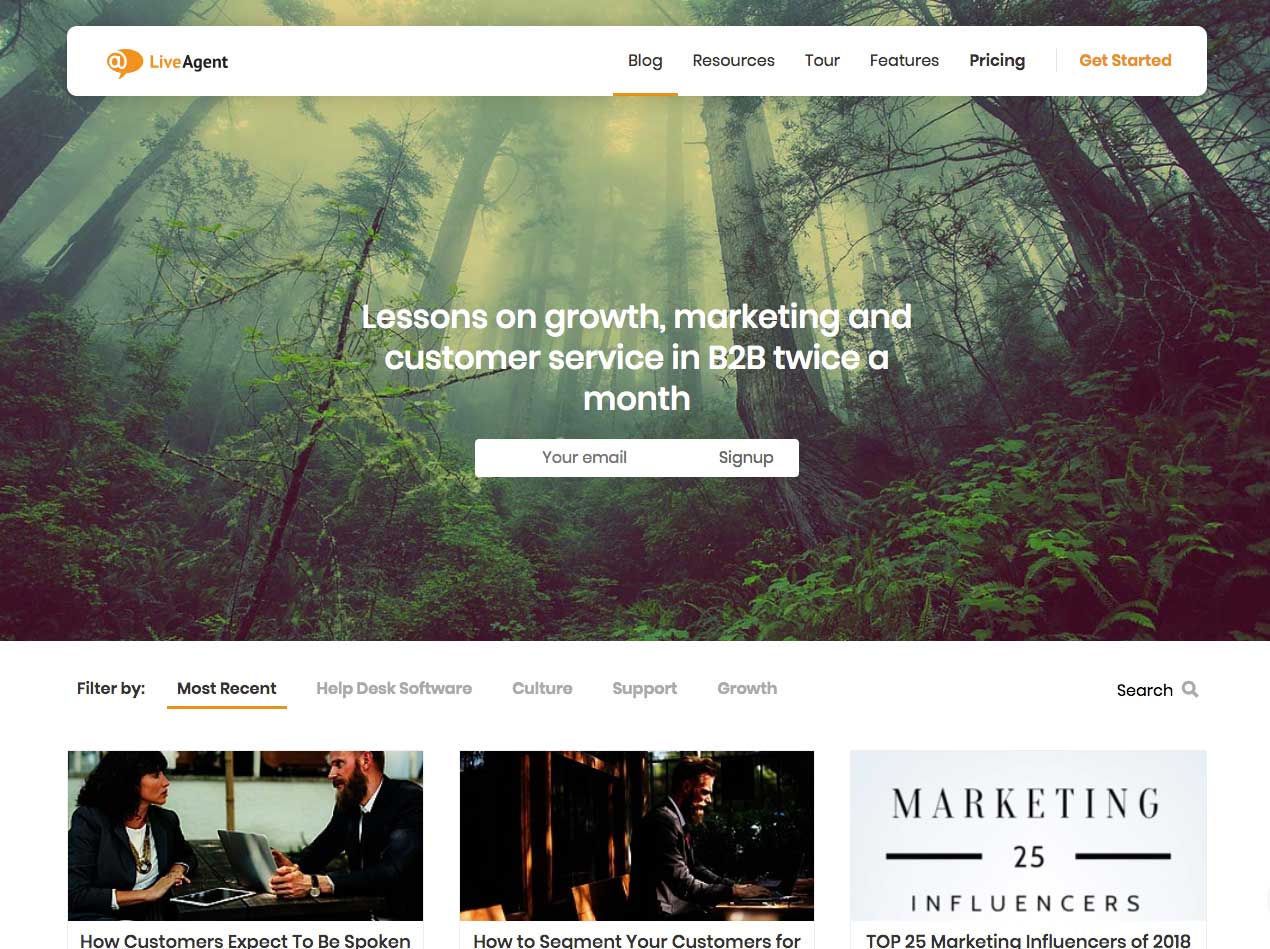Growing a Bootstrapped Side Project from $20,000 to $250,000 a Month
Hello! What's your background, and what are you working on?
Hi, I'm David Cacik and I'm the Head of Growth at LiveAgent. I started my first company in high school and then another one in college. I sold it and took an exciting role at LiveAgent. I was the first "marketing guy" to join the company, and helped it grow from $20k to $250k MRR.
LiveAgent is a multichannel customer service software. We are a bootstrapped SaaS, based out of Bratislava, Slovakia (Central Europe). We compete with multi-million dollar-backed companies like Zendesk and Freshdesk which makes it even more challenging and fun.

How was LiveAgent born?
LiveAgent was created as a side project. The company's first product was Post Affiliate Pro, which is affiliate tracking software. We did research on a good customer service tool but couldn't find one. That's when we decided to build LiveAgent, solely for internal use. After awhile, customers, mainly B2Bs, started asking us what we used for customer service. And that's how we sold the first license for LiveAgent.
Fast forward a few years, and LiveAgent overtook Post Affiliate Pro in both MRR and team members.
What went into building the initial product?
We used the same technologies for both products so we could spare the same team to shift focus. LiveAgent was not initially a multichannel support software. It was actually two separate applications, one for email ticketing and another one for live chat. In 2012, we merged them together and that's how LiveAgent was born.
Everything that we put into building LiveAgent, was funded by Post Affiliate Pro's sales. The toughest decision at that point in time was whether to continue funding LiveAgent out of PAP's earnings, or determine if those earnings could be better used for improving and marketing PAP. We agreed that the market for customer service software is much bigger, took the risks and focused on LiveAgent.
There was also the option of venture capital, but bootstrapping has always been present in our DNA, along with healthy and steady growth. It was, and still is, very tempting to take outside funding, but it's not what we're looking for at the moment.
How have you attracted users and grown LiveAgent?
We got our first customers by reaching out to our customer base and by customers asking us directly about the software we used for customer service. We also gave away a few licenses to our partners and friends, which worked great for gathering feedback and referrals. One of the friends was a local web hosting company. After they started using LiveAgent, we noticed that three out of four other leading local web hosting companies started using it as well, and they all continue to use it now.
Word of mouth and branding displayed on our widgets such as "Live Chat Software by LiveAgent" were bringing in 50% of new leads, and the rest consisted of organic traffic driven by our SEO efforts, affiliate referrals and PPCs. Even though clicks are crazy expensive and keywords are insanely competitive, we still managed to find our way around and get positive ROI with our PPC campaigns.

Don't be afraid to give away a few licenses for free. If you're confident in your product, you can be sure that the "free" license will be paid back multiple times sooner or later.
What's your business model, and how have you grown your revenue?
We started by selling self-hosted single-payment licenses, in which customers would purchase a license, install it in their cloud and if needed, purchase product updates every 12 months. With LiveAgent, we could also upsell customers by adding more seats or advanced features. After 2012, we started with SaaS subscriptions and they now make up about 90% of our annual revenue.
We still offer self-hosted licenses but our focus is mainly on subscriptions. Pricing has always been a big question mark for us and to be honest, we still change it almost twice a year.
With LiveAgent, we are making approximately $250k in MRR consisting of subscription sales, self-hosted license sales, enterprise sales and services. We've tried hundreds of growth hacks and failed with most. If I were to pick the ones that work best (with the most ROI) I would go with:
- Building an online presence by registering your product at software directories/comparison websites; gathering reviews, utilizing their PPC/lead generation programs and promoting the social proof. This practice has been the single most ROI positive hack we've done, and I went into detail about how it brought a 300% increase in MMR here.
- Improving the onboarding user experience. LiveAgent is complex software and can be used in multiple ways. We reworked our "Getting Started" guide and made it super easy to set up which helped us increase the conversion rate of our Trial>Paid funnel.
- Investing in customer service. I was the first "marketing guy" to join LiveAgent and at the time, we already had six customer support representatives. Taking good care of your customers is essential, and together with having a great product, creates the groundwork for virality and word-of-mouth marketing.
What are your goals for the future?
We just opened a new office and are looking to hire more great people to help us grow faster. We've also launched a new call center feature and are planning to launch a new cloud environment to deliver a faster, better experience.
We don't do typical marketing budget planning. We only invest in measurable activities, which bring in positive ROI. We are very careful about where and how we spend.
We are probably facing the same issues as any other software company — finding the right talent. The level of technically qualified talent is very high here, in Eastern Europe; however, we have limited access to experienced Sales and Marketing people.
In the near future, we are hoping to build key partnerships and explore specific local markets.

What are the biggest challenges you've faced and obstacles you've overcome?
Hiring salespeople has been the same experience as with finding a defense against the dark arts teacher in Harry Potter. Most of them didn't last longer than a couple of months. That has probably been our biggest challenge.
We have also spent a lot of money on PPCs when we have outsourced it. That's when we decided that key projects have to be handled by in-house team members, sharing the same mindset and bootstrapping culture with a high focus on performance and responsibility.
What's your advice for indie hackers who are just starting out?
Focus on building a great product that people will love, and if you need outside funding, wait until VCs approach you and take the best deal.
Also, as our story confirms, you don't have to have a fancy team consisting of Facebook and Uber dropouts and an office in the Bay Area to be able to compete with $150M+ funded companies.
Where can we go to learn more?
You can check out LiveAgent's blog here. Recently, I also started my own SaaS growth hacking blog where I share my experience and tips and tricks I've tried with LiveAgent. You can connect with me on LinkedIn and feel free to ask questions below. I promise I will answer all of them. :)

Very informative David, we also try to do some experiments on how we can improve conversions by finding a great app that could provide us with substantial number leads. We have several apps tested that we found on this website -> https://alternatives.co/
Awesome stuff! Connecting with you on LinkedIn - will love to take your advice on some of the things that we are experimenting with!
Ahoj Dávid :) It's nice to see here somebody from my home country.
Ahoj :) Likewise!
Super inspiring story David! As the marketing guy, what was your approach to getting more clients? You mentioned PPC ads and hiring salespeople, was your customer base something like 30% from PPC and 70% from your sales staff cold-calling?
Hi Isaac, thank you!
Our leads come from:
Usually, it's a combination of 2 or more. Cold calling makes up for less than 1%, our sales staff focuses mainly on the Trial->Upgrade funnel by guiding customers.
Appreciate the detailed answer! It's great that you're focused on the trial-upgrade part, which I can imagine the customer service really helps to convert into sales.
Just one last question, did you track how many prospects come from the list you gave (Organic/PPC/Referral/Affiliate/Plugins/Blog) before they started the trial? If so, what was the percentages like?
Hi Isaac, we track the source of trials per channel. But the metric which is more important is source of "upgrades" e.g. we match paying customers with the source they came from and see how many came from the source and how much they're paying. That way, we can 99% tell which channel is the highest grossing.
Example: We get a lot of trials from referrals/branding but they don't convert as well as software directories, so knowing "how many" trials come from each source would be irrelevant because the ultimate goal is not trials but paying customers.
I hope it makes sense :D
Yeah, you're right. Conversion rate is way more important than sheer numbers, cos then you'll know which channel to invest more for maximum effectiveness. Time for me to look closer at my analytics!
Awesome insights David. We are currently trying to growth hack our virtual accountability/coworking tool Focusmate so I really appreciate all the tips and insights. Hoping to apply your advice on using software directories to aid us in the very near future!
Cheers for the great post.
Thank you! A while back, I had a similar idea like Focusmate :) Good luck!
Hi David @mnzrs ,
I got a lot of value from this. I appreciate you taking the time to share all of this info! I have a question for you:
What is one strategy you would have focused on in the very beginning of growing LiveAgent, if you had no existing customers from another product to sell to (if you had to truly start from nothing)?
Would it be putting out valuable content relevant to your target audience, cold emailing to get sales, giving heavily discounted/free licenses away, etc?
Thank you,
Tyrel
Hi Tyrel,
before investing in content I would definitely try to build online presence on software directories. "Comparison marketing" is also a great way to get organic traffic. People tend to Google "Alternative to xy" - this is a strategy I haven't mentioned in the article but worked for us really well. Other than the traditional software directories mentioned above, you can also try alternative.to which ranks pretty high on SERP. So I would give away a few licenses for free and create profiles and ask for reviews to gain exposure. Budget: $0.
Cheers,
D.
Thanks for sharing. 🙌
Great story
Thank you!
Hey David. Great story! I'm definitely going to implement parts of the first growth hack you listed once I launch my SaaS app. Thanks a ton. :)
You're welcome Jake :)